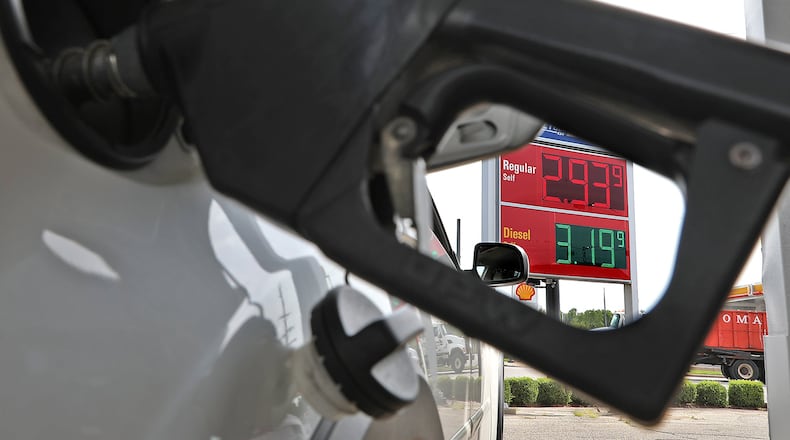“Oil prices have rallied more than what we would have expected in fall,” said Patrick DeHaan, a petroleum analyst for GasBuddy. The gas prices are higher than they’ve been since September 2014, when they topped $3.36.
»RELATED: Sears closing at Fairfield Commons Mall, new stores announced for space
But hurricane Florence isn’t the culprit, said Kara Hitchens, a Dayton area AAA spokeswoman. There aren’t oil refineries in the Carolinas, so natural disasters don’t impact the gas prices like a hurricane that hits the Gulf, she said.
Some of the price jump can be attributed to the regular cycles states in the Midwest follow, where prices peak before dropping daily, just to hit another peak, according to the Federal Trade Commission’s Bureau of Economics.
AAA tips for saving at the pump• If your vehicle's engine does not require premium or mid-grade fuel, don't buy it
• Don't top off your gas tank
• If you have to replace a gas cap, make sure it is the right one for your car
• If you notice a sudden decrease in fuel economy, have your vehicle checked
Several factors in the oil industry are disrupting the normal cycle of fuel costs as demand remains stronger than average moving into the fall season. More people are still traveling among warmer weather and Americans have started purchasing large, less fuel efficient vehicles as gasoline returned to affordability over the last few years.
Within the last four weeks, Americans consumed about 9.7 million barrels each day, up 2 percent from last year. Adding in total oil products, which includes diesel, jet fuel and oil used to make plastic bags, the nation used about 21.4 million barrels per day, up 5 percent from last year, according to the Energy Information Administration.
»RELATED: Kroger’s new clothing line debuts in stores today
The United States only produces about half of what it needs, DeHaan said. The rest it imports from other nations. While the U.S. doesn’t import from Iran, countries who do business with the Middle Eastern nation don’t want to “cross the U.S. president” as he imposes full sanctions effective Nov. 4, so they are starting to buy oil from other countries.
The sanctions are expected to take between 1 million and 1.5 million barrels of crude oil off the market each day, he said.
“Demand is going down a little bit, but certainly not by millions of barrels a day,” DeHaan said.
Those sanctions are already costing consumers about 5 cents to 10 cents more per gallon when filling up. The Organization of the Petroleum Exporting Countries said over the weekend it will only increase production if consumers demand it in response to a tweet from President Donald Trump criticizing the organization and demanding it do something to reduce the prices.
BIZ BEAT: Beavercreek shopping center showing sign of a ‘renaissance’
OPEC’s response concerns DeHaan, he said, because if supply continues to be low while demand is up, prices are going to continue to rise, or at least stay elevated.
“It’s going to be interesting. (Trump) may now be forced to look back into doing a deal with Iran because if he doesn’t want oil prices to go up anymore, that’s really the only way,” he said.
Refineries are also putting out a slightly smaller supply as half a dozen in the region undergo maintenance, Hitchens said.
Fall is a common time for refineries to do maintenance since there’s usually a lower demand for gasoline, but there’s more maintenance going on this year than most, DeHaan said.
Maintenance isn’t a huge concern, DeHaan said, but paired with high demand and sanctions, the maintenance will help keep costs elevated.
FIVE FAST READS
• WWE’s Starrcade coming to Cincinnati
• Elder-Beerman’s website relaunched with similar brands
• What to know about the amusement store moving into Beavercreek's Sears
•What's killing Sears? CEO says pensions
• Tipp City luxury home built by German Baptist crew for sale
About the Author
